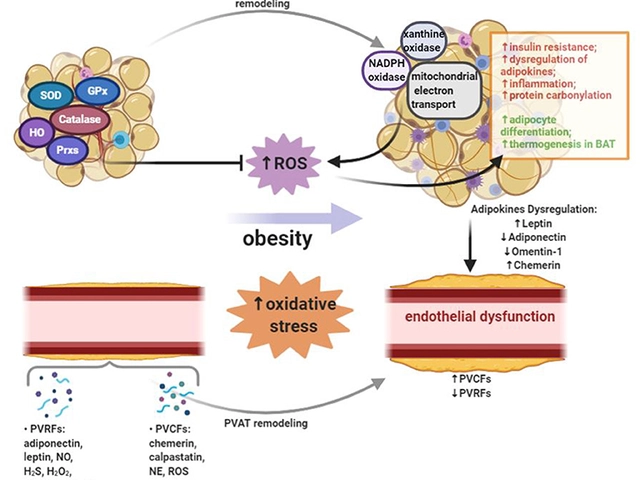Massage Therapy for Tremors: Effective Relief or Myth?

Ever watched someone’s hands shake and wondered what it feels like—and if there’s a simple fix? Tremors don’t care about your plans or your pride. They show up at the worst moments: holding a coffee cup, shaking hands, even writing your name. The urge to regain control brings people to all sorts of remedies. One question keeps popping up: can massage therapy calm trembling nerves or is it just a relaxing distraction? Let’s get hands-on with the facts and deep-dive into what science, therapists, and real people say about using massage for tremors.
What Triggers Tremors, and Who Feels Them?
Tremors might look like nervous jitters, but they go way beyond being a little jumpy. The most well-known tremor is the kind that happens with Parkinson's disease, but tremors can hit people with essential tremor, MS, thyroid issues, or just as a side effect of meds and caffeine. They can be so subtle you barely notice, or shake up your everyday tasks.
Here’s a quick breakdown of the main tremor types people wrestle with:
- Essential Tremor (ET): Shows up during movement, especially in the hands. Common in folks over 40, but can start younger.
- Parkinsonian Tremor: Tends to happen when muscles are at rest. It’s slower and seen as a classic sign of Parkinson’s disease.
- Intention Tremor: Kicks in when you try to move your arm or hand with purpose, like reaching for a water bottle. Linked to MS or brain injuries.
- Physiologic Tremor: This is the harmless shake most of us get after too much coffee, hard exercise, or stress—usually goes away fast.
Tremors aren’t limited to one part of the body. The hands get most of the attention, but some people feel it in their head, voice, legs, or even tongue. Tremors hit about 10 million people in the U.S. alone according to the International Essential Tremor Foundation. That’s more than all Parkinson’s cases combined. Living with them isn’t just inconvenient—it’s exhausting. Just imagine spilling soup at dinner every night, or not being able to sign your own checks.
Doctors usually figure out what type of tremor it is by checking symptoms, running some tests, and eliminating other causes. They might suggest meds, physical therapy, or lifestyle tweaks. But drugs don’t always work, and not everyone wants surgery or extra pills. That’s when people start hunting for a hands-on solution. Cue: massage therapy.

The Science Behind Massage: What Does It Actually Do?
Everyone knows massage feels good, but can it make a real dent in tremors? Massage therapists don’t just knead your back—they understand how nerves, muscles, and stress meet up in your body. Let’s untangle the actual science behind massage and tremor relief.
The root of tremors is nervous system misfires. Imagine your brain sending mixed-up signals down your nerves, causing muscles to twitch without warning. Massage therapy isn’t going to rewrite your DNA or zap your brain back to factory settings—but it might make the twitching less loud or distracting.
Key effects of massage therapy for tremor sufferers:
- Reduces stress hormones: Tremors are worse when you’re nervous or tense. Studies show even a short massage lowers cortisol (your stress hormone), which can reduce the shake for some people—at least for a little while.
- Improves blood flow: Better circulation means muscles get the oxygen and nutrients they need—so stiffness and pain (often sidekicks of tremors) ease up.
- Boosts dopamine: People with Parkinson’s are low on dopamine, a chemical that smooths out movement. Massage has been shown in a 2022 pilot study to bump dopamine levels temporarily. Results aren’t permanent, but it’s a “why not try it?” kind of thing.
- Lowers muscle tension: When your muscles are super tight, the shakes are worse. Massage helps them chill out, which can make movements less jerky.
But let’s keep it real. Massage doesn’t erase tremors like magic. Doctors at the Mayo Clinic say massage can help ease symptoms, but it’s not a cure. Most people feel temporary relief. Some even say the effects build up after regular sessions.
Here’s some real-world data that’s caught attention:
| Study/Source | Participants | Type of Tremor | Results |
|---|---|---|---|
| 2018 Iran University Medical Study | 60 adults | Essential Tremor | 54% felt moderate symptom relief and less anxiety after 6 weekly massages |
| 2022 Parkinson’s UK Pilot | 19 Parkinson’s patients | Parkinsonian Tremor | Noticed less stiffness and slightly reduced tremor after deep tissue massage |
| University of Miami Touch Therapy Project (2008) | 12 patients | MS and Parkinson’s | Reported better sleep and fewer night shakes for up to 2 days post-massage |
Massages that focus on slow, deep pressure seem to hold the most promise for tremors. A massage therapist who’s worked with neuro patients told me that gentle Swedish or myofascial release techniques help people relax without overstimulating nerves. Vibration or rough massages can actually make shakes worse—so it really does matter who’s doing the work and how.
Struggling to afford professional massage? Self-massage devices (think of handheld percussive tools or foam rollers) have some benefits, but you need to use them gently. Overdoing it or using too much pressure can set off tremors more than calm them. Don’t skip talking to a doctor or neuro-specialist before trying anything new with your symptoms. If you notice your tremors spike after massage, or if your skin gets irritated, back off and reassess.
The mind-body part is just as real as the physical. Just lying down on a table, breathing slow, and trusting someone to help you, can break the stress-tremor-stress cycle. That’s a win, even if it doesn’t cure the whole problem. The key is to set your expectations: think of massage as part of your toolbox, not the whole solution. It helps some, gives momentary calm to others, but doesn’t work miracles overnight.

Tips for Making Massage Therapy Really Work for Tremor Relief
Alright, you want to give massage a try to rein in your symptoms? You’re not alone. Here’s what actually works—not just rumor or wishful thinking. Think of this as your action plan for squeezing the most out of massage therapy.
- Pick your therapist wisely: Don’t just look up the nearest spa. Choose someone with experience in neurological conditions—preferably with Parkinson’s or essential tremor patients. Ask them directly about their background.
- Consistency beats intensity: Massage once every few months won’t do as much as regular, gentle sessions. Weekly or bi-weekly is where most people see a difference. Keep them short (30–40 minutes), focusing on neck, shoulders, arms, and hands.
- Communicate openly: Tremors vary day-to-day. Tell your therapist how your body feels, where it’s extra tense, and if anything triggers your shakes more. If pressure feels wrong or pain spikes, speak up right away.
- Try the right styles: Swedish and myofascial techniques are the safest for tremors. Avoid high-speed vibration or rough, percussive methods—they can ramp up the shakes.
- Prep for your appointment: Avoid caffeine, get hydrated, and do some light stretching before your session. This helps relax you going in, so you get more out of the massage itself.
- Pair with other therapies: Physical therapy, medication tweaks, and stress management (like yoga or mindfulness) can boost your results. Don’t ditch what already works for you.
- Track your results: Keep a diary of how you feel—before and after each session. Note tremor intensity, sleep quality, mood, and any pain. This helps you and your care team see what’s working, and tweak your plan.
- Don’t expect instant miracles: The best feedback comes from people who gave it a few weeks. It’s about gradual improvement and layered benefits, not a one-and-done fix.
- Self-massage counts: If you can’t get to a pro every week, even simple hand or forearm self-massage (think gentle pinching or circular motion) can calm things down, especially before bed or in stressful moments.
It’s always cool to hear what works from real people. Take Maria, who’s lived with essential tremor for 14 years. She swears by 30-minute weekly massages for her hands and forearms, saying it lowers the shake just enough to help her type for work. Then there’s Greg—a guy I met through a support group—who finds deep-tissue back massage actually ramps up his tremors, but light strokes make a huge difference in his speech and mood for hours. Everyone’s different, but those who are consistent usually report more relaxed muscles and less stress-triggered shaking.
Some clinics even offer group massage therapy combined with relaxation coaching. There’s less social pressure, and seeing others with the same struggle builds community. Mobile massage therapists who visit homes are also trending, making it accessible for people with mobility or confidence issues.
A lot of folks try at-home gadgets—ball massagers, vibration pillows, handheld percussive tools. These aren’t a universal fix, though. If you want to experiment, start slow, use them on low settings, and avoid direct use on areas that tremor the most. Safety comes first.
Bottom line: using massage for tremors isn’t going to make you shake-free, but it can level things out just enough to give you a breather. When used right, it helps many people reclaim small victories: a steady hand to button a shirt, a cup of coffee that doesn’t spill, even a night of deeper sleep. With the right approach, a solid therapist, and realistic expectations, you might just find that massage therapy—while not a miracle—gives your nerves the nudge they need to quiet down, even if just for a bit.







This topic is genuinely intriguing, especially for those who struggle with tremors daily. Massage therapy seems like such a benign intervention, yet its effects on neurological symptoms often remain enigmatic. Physiologically, massage could theoretically improve circulation and promote relaxation of the nervous system, which might alleviate some tremor manifestations temporarily. However, I wonder how sustainable or consistent these effects are in clinical settings.
There’s also the psychological component to consider—massage can reduce stress and anxiety, which are known to exacerbate tremors. So the relief might be as much about calming the mind as it is about any direct neurological impact. Anecdotal stories often highlight personal success, but robust scientific evidence should guide expectations.
It would be enlightening to see more randomized controlled trials focusing specifically on different types of tremors, such as essential versus Parkinsonian, to parse out who might genuinely benefit. Has anyone come across comprehensive studies on dosage and frequency of massage for tremors?
I really appreciate this thoughtful breakdown of an often overlooked therapy. As someone who works closely with people suffering from chronic conditions, I find it important to remind ourselves that healing isn’t always linear or singular. Massage might not be a cure, but its role in improving quality of life can’t be dismissed.
It's crucial to approach massage therapy with an open mind, while also ensuring that patients consult medical professionals to tailor treatments safely. One key tip is to look for licensed therapists familiar with neurological conditions—they can adapt techniques to avoid aggravating symptoms.
Also, sharing real-world experiences helps demystify the process and empower people to try what might seem unconventional. Has the author or anyone here experienced noticeable changes after massage sessions?
Honestly, it seems like a mixed bag. Sure, massage feels good in the moment, but calling it an "effective relief" for tremors sounds a bit optimistic to me. Tremors have complex neurological roots that a few muscle rubs might not touch deeply enough to make a long-term impact.
Plus, a lot of "success stories" might boil down to placebo or temporary relaxation. I'm skeptical without hard science backing this up. Of course, if it helps someone feel a bit better psychologically, then fine, but we shouldn’t oversell it. People deserve clear and accurate info, not just hopeful fluff.
Still, I’m open to evidence that suggests a clear mechanism or consistent results across studies. Until then, I’d advise caution in expecting miracles from massage alone.
Oh, come on guys, it's not rocket science! If it feels good and you think it helps, then why drag your feet about it? Life’s too short to be all analytical when sometimes you just gotta feel the vibes. Tremors suck, and if a massage session helps even a tiny bit, isn’t that worth a shot?
Yeah, maybe it’s not the holy grail of tremor treatment, but the gentle human touch and relaxation are powerful. Sometimes the drama of searching for perfect solutions makes us miss out on real, simple comforts. I’d love to hear some juicy personal stories here!
Hey everyone, just wanted to chime in with some encouragement. I’ve worked with clients who have tremors, and many report that massage therapy reduces their muscle tension and helps them feel more in control of their bodies. It’s not a magic bullet, but it’s part of a toolbox to manage symptoms.
One tip for anyone considering massage for tremors: communicate openly with your therapist about pressure and areas to avoid, especially if you feel sensitive or painful spots. Starting with gentle techniques can build tolerance gradually.
Also, pairing massage with stretches or exercises recommended by your doctor can enhance the overall benefit. Anyone else want to share positive experiences or ask how to get started?
omg yes i totally agree with the points made here so far! ive tried massage therapy for my dad who has Parkinson's tremors and while it didnt cure anything, it def helped him relax and sleep better afterward. sometimes just feeling cared for makes a huge difference.
one thing tho, not all massages are equal. you gotta find someone who knows what they’re doing and won't just randomly press pressure points. also, keep your expectations realistic but hopeful, and ask your doc if it’s a safe addition to your care plan.
For the sake of clarity and precision—which seem to be lost in some of these tangents—it's essential to emphasize that massage therapy is not a medically sanctioned cure or standard treatment for tremors. Tremors stem from distinct neurological pathologies that require evidence-based interventions.
That said, the ancillary benefits such as enhancing circulation and reducing stress might marginally improve subjective well-being. Yet, I must stress the lack of rigorous clinical data affirming any direct or sustained impact on tremor frequency or severity. Anecdotes do not replace scientific method.
Please do not conflate symptomatic relief with therapeutic validity.
Interesting discussion from both scientific and personal angles! I’ve been curious as well, so here’s a thought: could the type of tremor influence whether massage helps? For example, essential tremor vs. Parkinsonian tremor have different origins and progression. Maybe massage works better on one than the other?
Also, frequency and timing of massage sessions might matter. Like, is it a weekly thing, or more often? And could combining massage with other therapies boost overall outcomes?
I'm fascinated by integrative approaches and would love to see more targeted research here. Anyone found good resources or studies addressing these nuances?
Of course massage "helps," they want you to think it’s some magical cure because big pharma doesn’t want natural remedies stealing their thunder, right? Listen, if massage was truly effective for tremors, wouldn’t there be massive campaigns and clinical trials already funded by those puppet corporations? It’s all smoke and mirrors to keep you addicted to pharmaceuticals.
Don't fall for the propaganda. Massage feels nice, sure, but expecting it to powerfully heal neurological conditions? Nah, that’s fantasy. Keep questioning everything and look beyond surface claims. Stay woke.
While I see some good points here and there, I remain skeptical about endorsing massage as a credible intervention for tremors without more rigorous proof. It’s frustrating how so many alternative therapies get hyped with minimal accountability. That said, if used responsibly and complementing medical care, it might have some merit.
However, the priority must always be scientifically validated treatments and strong regulatory oversight to avoid exploitation of vulnerable patients desperate for relief. Anecdotal stories are not enough to sway me.
From a technical and evidence-based standpoint, the scientific community has yet to endorse massage therapy as an effective treatment for tremors. If it were truly efficacious, we’d have established protocols and peer-reviewed data by now—yet such standards are absent. This should caution sufferers against investing too heavily in unproven methods.
Nonetheless, I acknowledge the possible psychological benefits and stress reduction it may provide. Patients must prioritize medically validated treatments and view massage strictly as a supplementary measure where applicable.
Please remain wary of exaggerated claims and seek professional advice judiciously.